Damien Hirst reaches new heights in St Moritz
‘Mental Escapology’ is Damien Hirst’s first public exhibition in Switzerland, and sees a monumental sculpture by the artist installed on Lake St Moritz
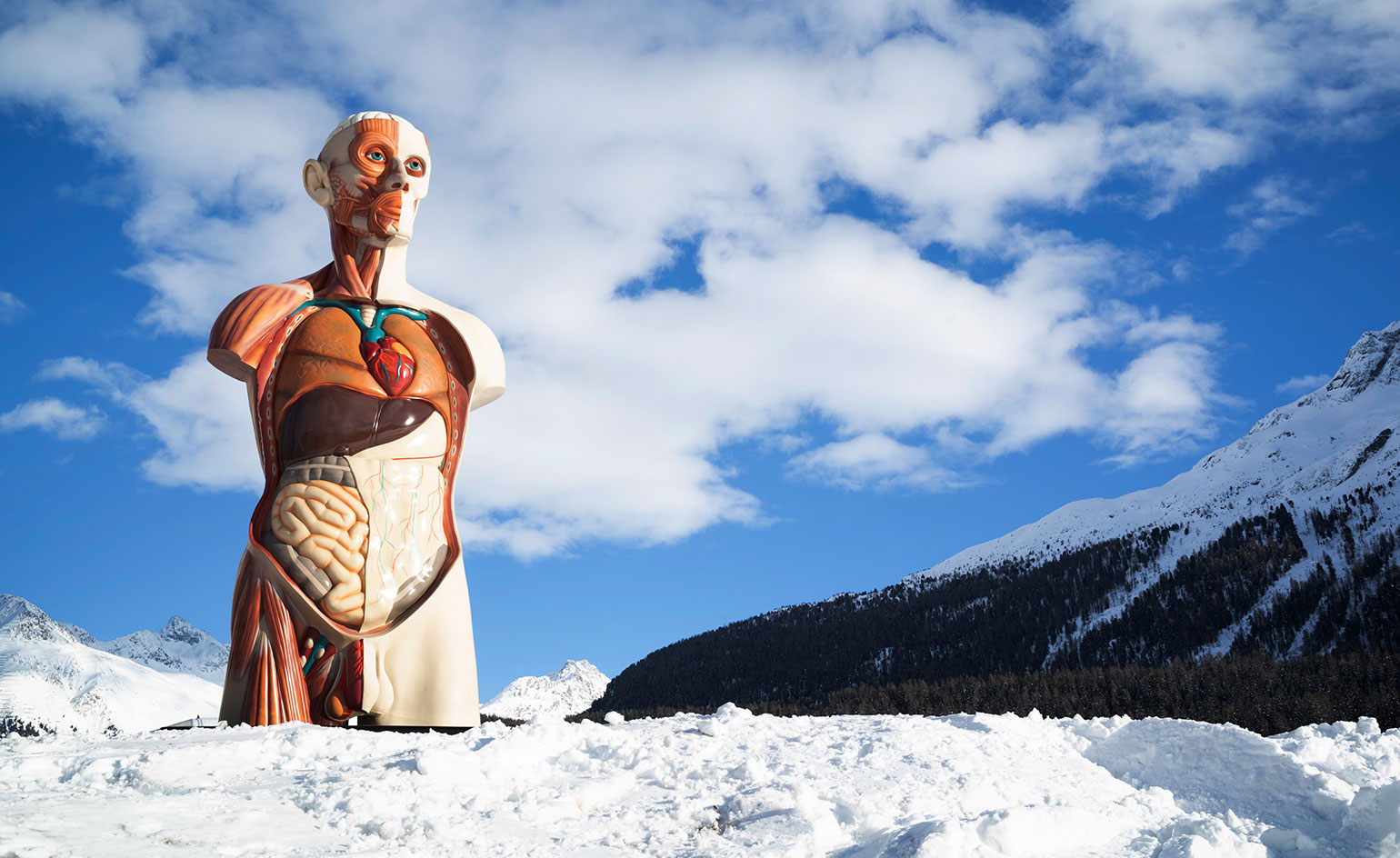
Synonymous with Alpine glamour, St Moritz is best known as the birthplace of winter sports. But away from the slopes, the Swiss resort is fast establishing itself as an important cultural centre. This season it has come alive with contemporary art – hosting a major exhibition of works by British artist Damien Hirst.
Spread across the town’s indoor and outdoor civic spaces, ‘Mental Escapology’ is Hirst’s first public exhibition in Switzerland. It features 40 works from some of the artist’s best-known series, including Spot Paintings, Natural History and Kaleidscope.
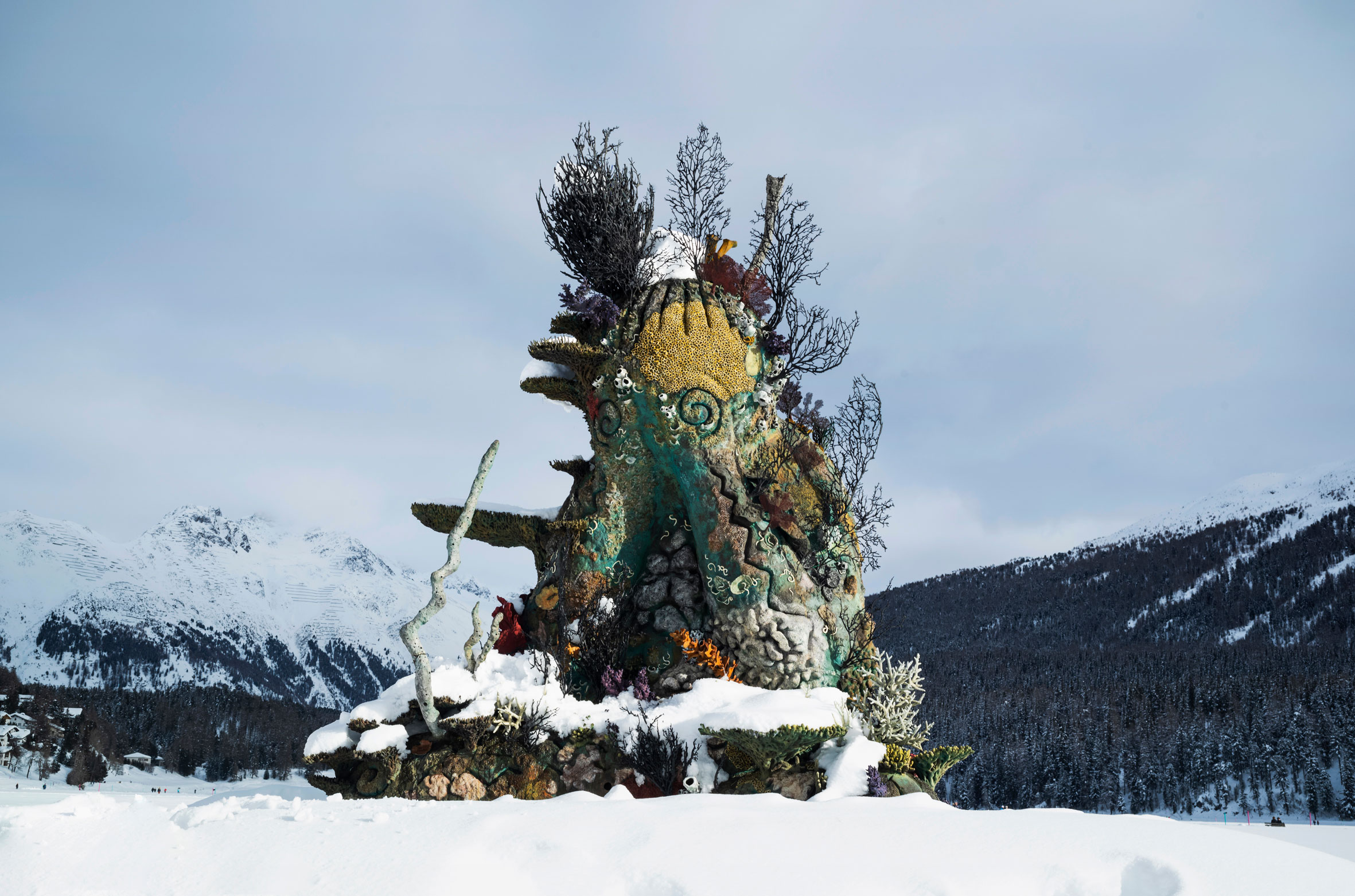
Damien Hirst, The Monk, 2014. Installation image of Lake St Moritz, 2021. © Damien Hirst and Science Ltd. All rights reserved, DACS 2021
For the first time, the frozen surface of Lake St Moritz plays host to a large-scale sculpture – with Hirst’s 12ft-high The Monk (2014) installed at its centre.
On the edge of the lake, art lovers can catch a glimpse of Temple (2008), a giant anatomical sculpture, and Two Figures with a Drum (2013), which was previously displayed alongside The Monk in the artist’s 2017 exhibition, at the Punta della Dogana in Venice.
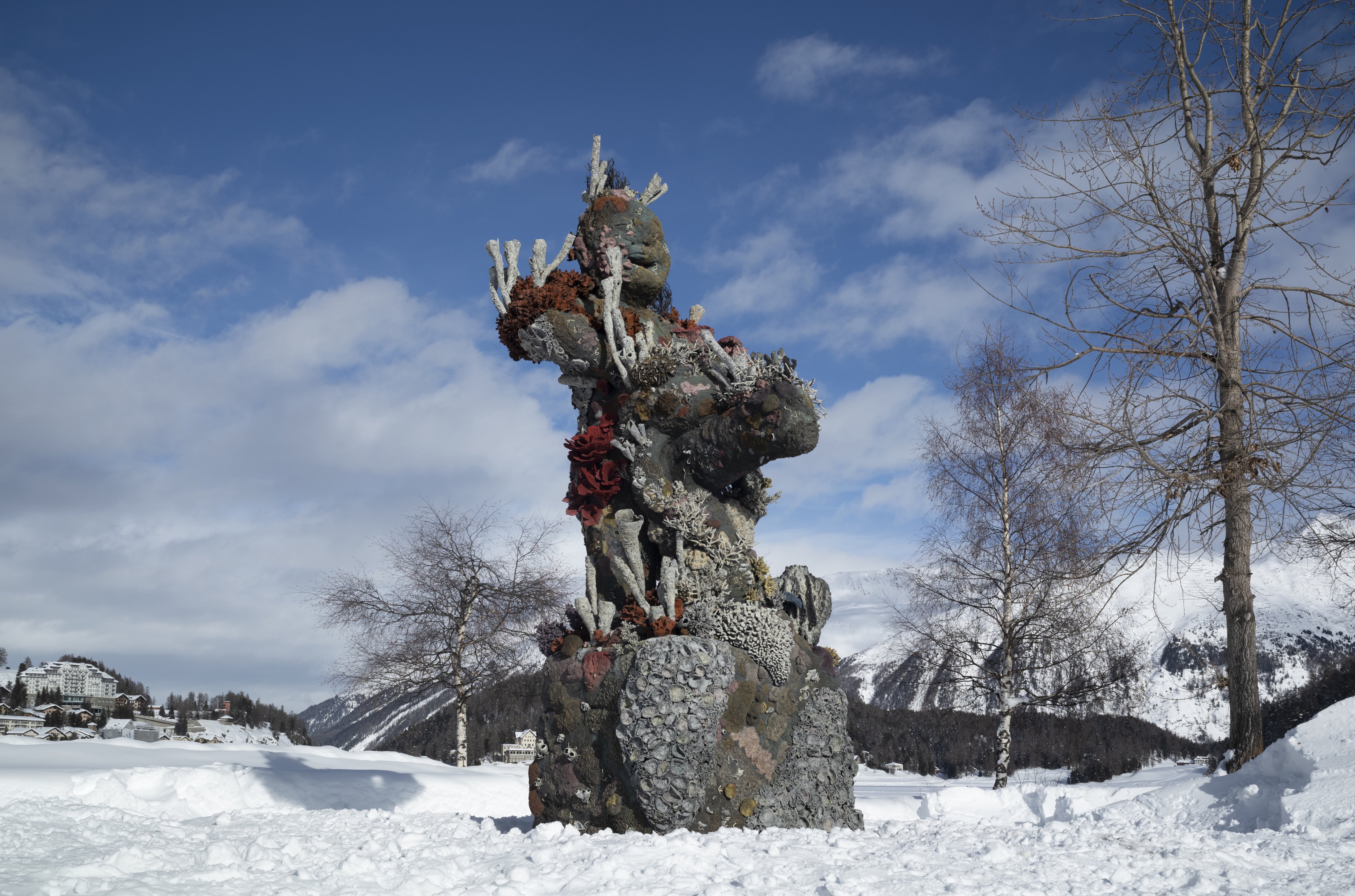
Damien Hirst, Two Figures with a Drum, 2013. Installed in St Moritz, 2021. © Damien Hirst and Science Ltd. All rights reserved, DACS 2021
‘It’s been amazing to be able to set my work in the incredible frozen lake and mountains of St Moritz, alongside beautiful historical buildings that link back to big themes I love, like science and religion, themes that have influenced my work so much over the years,’ says Hirst. ‘I’ve always thought it’s such a privilege to be able to live with art and I’m so happy to see my work outside in this mind-blowing setting for everyone in the city to enjoy.’
Curated by Jason Beard and produced by Oscar Humphries and Marco Voena, the exhibition creates a fascinating dialogue between contemporary art, the natural world and the historical.
‘The valley of St Moritz is a natural wonder. You have the lake and then the mountains surrounding it,' says Humphries. ‘We tried to use that to show the outdoor sculptures to their best advantage. Temple looks out over the lake and it can be seen from a great distance as it's so large and the colours stand out against the white of the snow and the ice.’
‘St Moritz is also a cultural centre – full of art lovers and with interesting museums like the Segantini Museum. So it has nature and culture, which is the perfect backdrop for a show like this.’
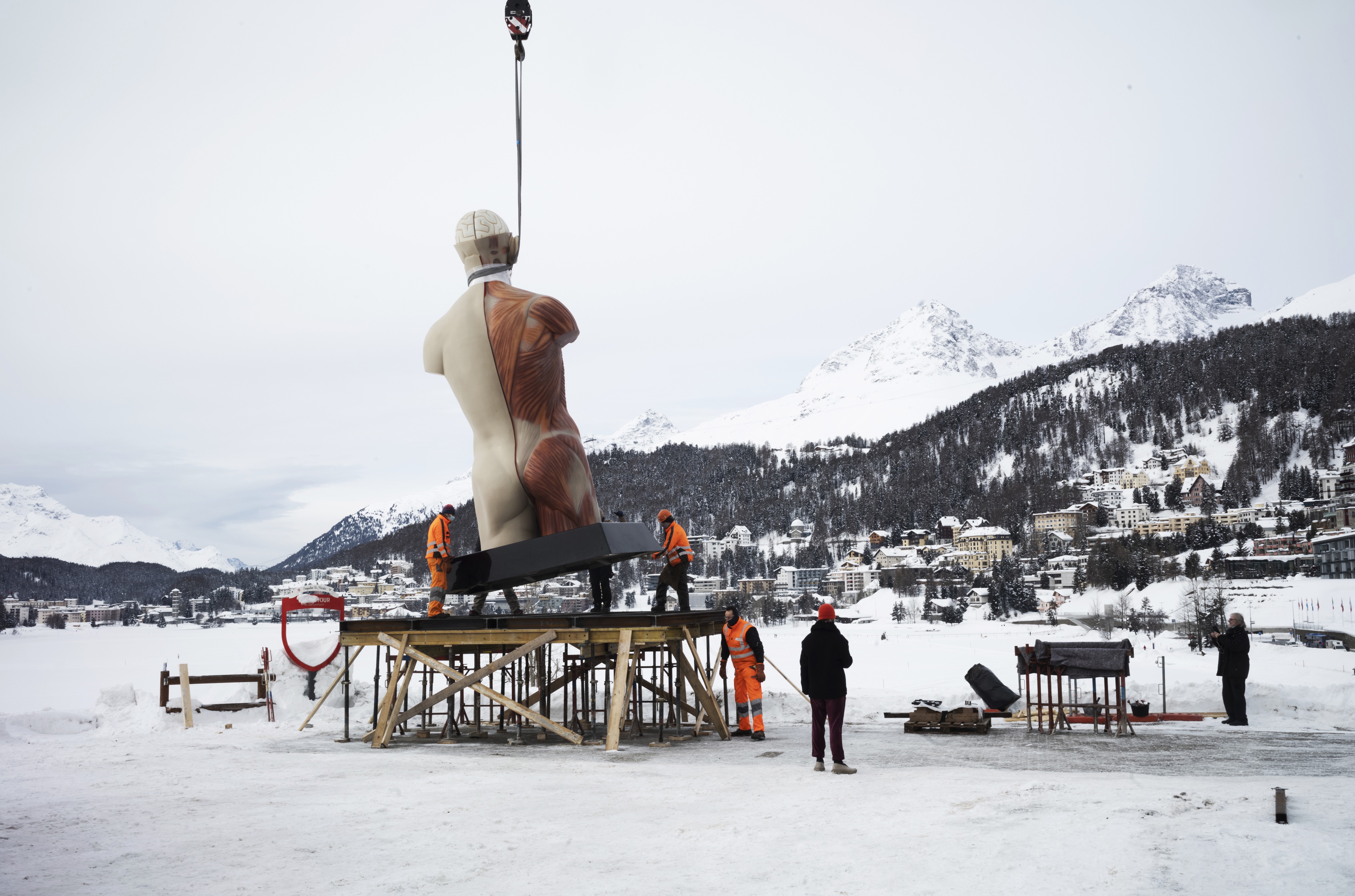
Damien Hirst, Temple, 2008. Installed in St Moritz, 2021. © Damien Hirst and Science Ltd. All rights reserved, DACS 2021
Installing a sculpture at the centre of the lake presented many logistical challenges for the team. ‘When we first discussed the idea we thought it would be impossible,' says Humphries, ‘but Marco and I, and the studio, liked the idea of something impossible.’
‘In the end we put it on a pontoon with a helicopter. Then the ice froze around the pontoon and the work. Now you can walk on the lake and the work feels at one with it.’
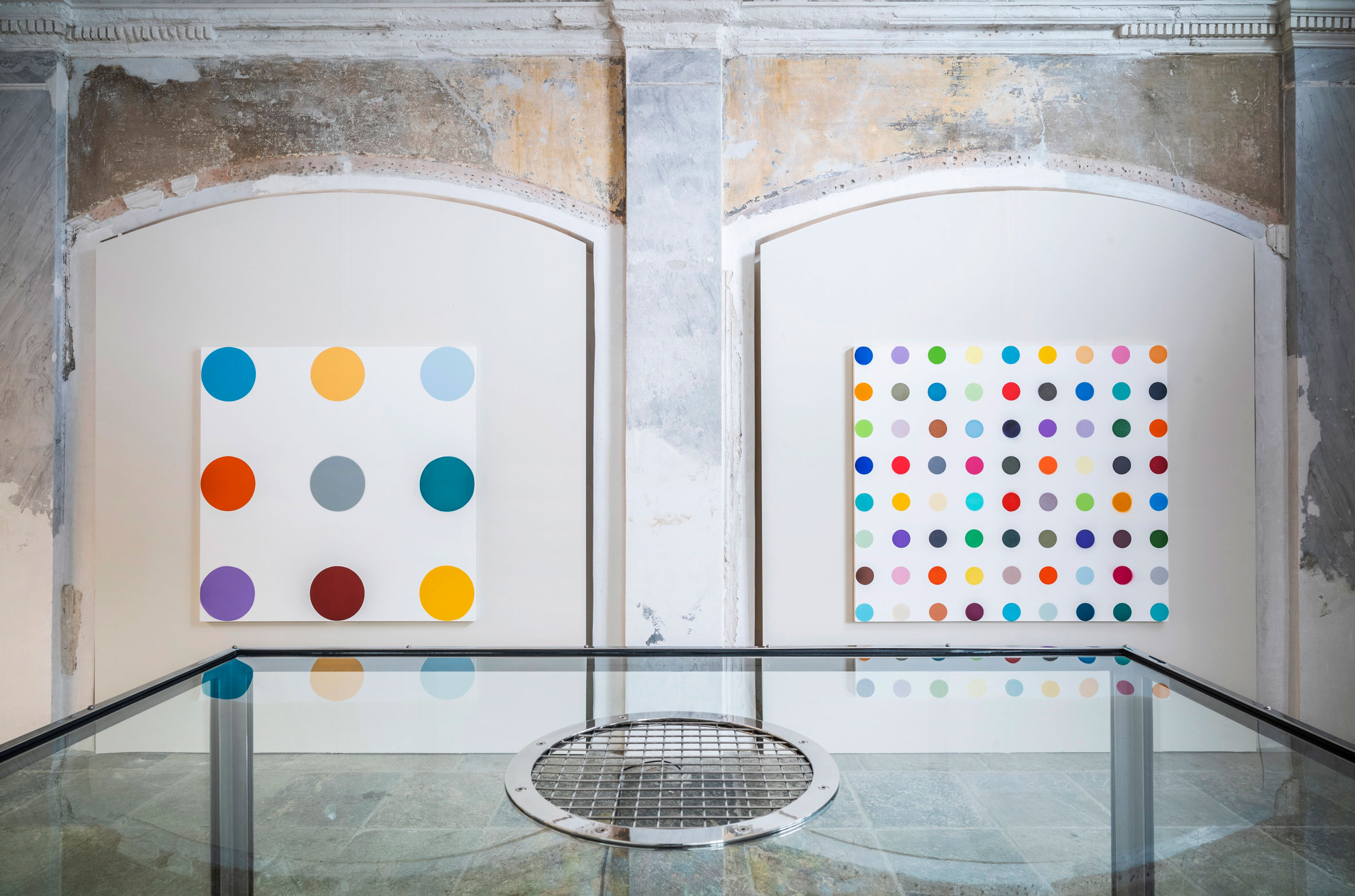
‘Mental Escapology’ at the Forum Paracelsus, St Moritz, 2021. © Damien Hirst and Science Ltd. All rights reserved, DACS 2021
Alongside the outdoor installations, works are displayed within some of the resort’s most architecturally significant buildings.
The recently restored Forum Paracelsus, which dates back to 1400 BC, has a history as a thermal bath and provides a unique backdrop for Spot Paintings, and the installation piece Stripper (2006) – a cabinet that contains surgical instruments.
Recalling mandalas and stained-glass windows, Hirst’s butterfly-wing Kaleidoscope paintings bring colour to St Moritz’s neo-gothic Protestant Church, where they are displayed alongside The Ascension (2003), a major formaldehyde work featuring a preserved calf.
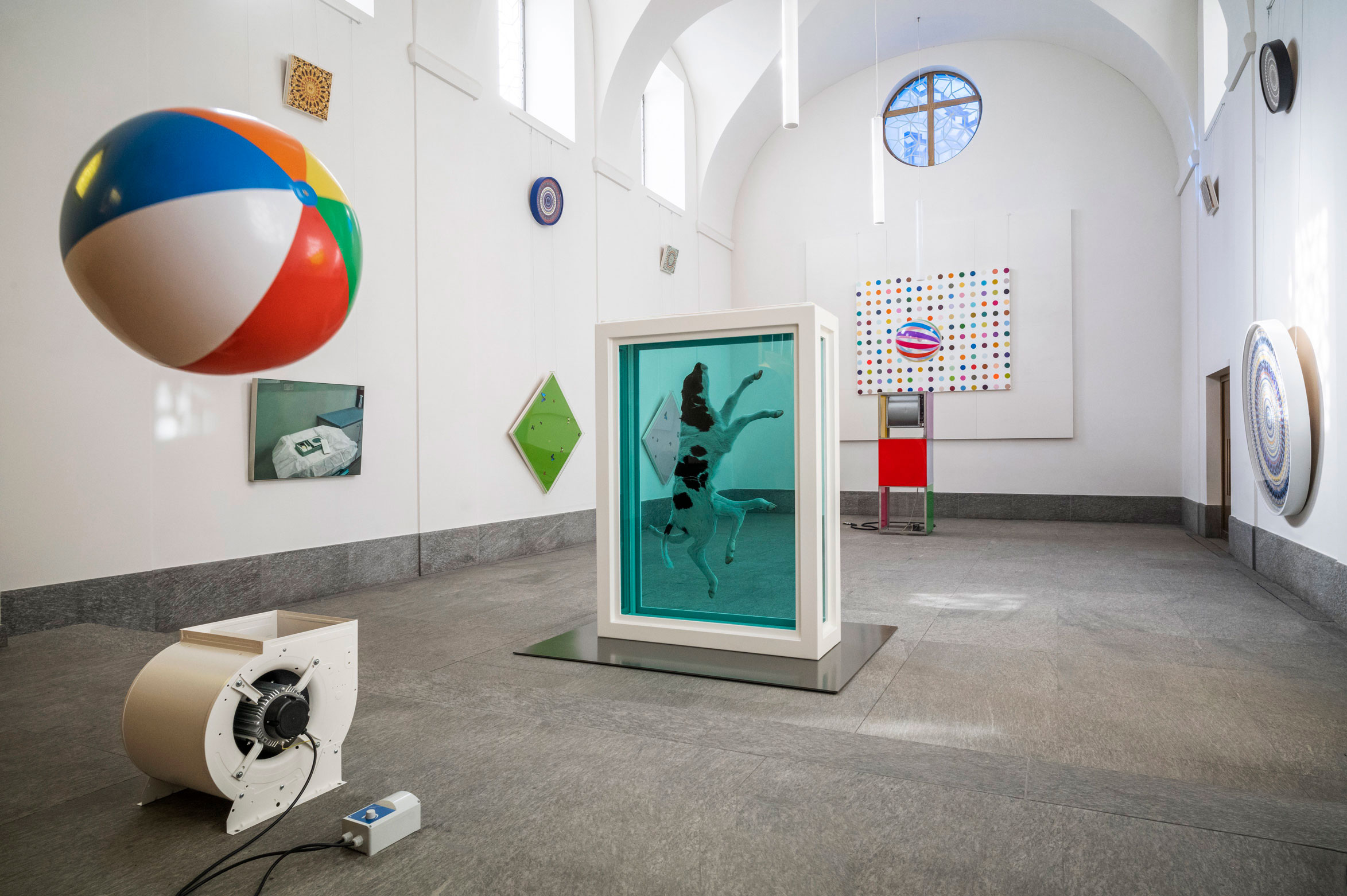
‘Mental Escapology‘ at the Protestant Church St Moritz, 2021.© Damien Hirst and Science Ltd. All rights reserved, DACS 2021
The exposure of the outdoor sculptures to St Moritz's winter temperatures has had an interesting effect on the works, which are made of bronze and encrusted with coral.
‘Their origin as artworks is the sea and it is fitting that they’re again connected to water, albeit frozen,’ says Humphries. ‘Since they were installed we have seen ice form on the coral – a reaction we didn’t anticipate. It's very interesting as an exhibition producer to see these magical things happen that we didn’t imagine.’
On display until 24 March, the exhibition follows ‘Aeternum’, Sean Scully’s 2020 show, and the 2018 opening of Hauser & Wirth’s local outpost in cementing the resort’s status as a high-altitude haven for art.
INFORMATION
Wallpaper* Newsletter
Receive our daily digest of inspiration, escapism and design stories from around the world direct to your inbox.
Harriet Lloyd-Smith was the Arts Editor of Wallpaper*, responsible for the art pages across digital and print, including profiles, exhibition reviews, and contemporary art collaborations. She started at Wallpaper* in 2017 and has written for leading contemporary art publications, auction houses and arts charities, and lectured on review writing and art journalism. When she’s not writing about art, she’s making her own.
-
 Extreme Cashmere reimagines retail with its new Amsterdam store: ‘You want to take your shoes off and stay’
Extreme Cashmere reimagines retail with its new Amsterdam store: ‘You want to take your shoes off and stay’Wallpaper* takes a tour of Extreme Cashmere’s new Amsterdam store, a space which reflects the label’s famed hospitality and unconventional approach to knitwear
By Jack Moss
-
 Titanium watches are strong, light and enduring: here are some of the best
Titanium watches are strong, light and enduring: here are some of the bestBrands including Bremont, Christopher Ward and Grand Seiko are exploring the possibilities of titanium watches
By Chris Hall
-
 Warp Records announces its first event in over a decade at the Barbican
Warp Records announces its first event in over a decade at the Barbican‘A Warp Happening,' landing 14 June, is guaranteed to be an epic day out
By Tianna Williams
-
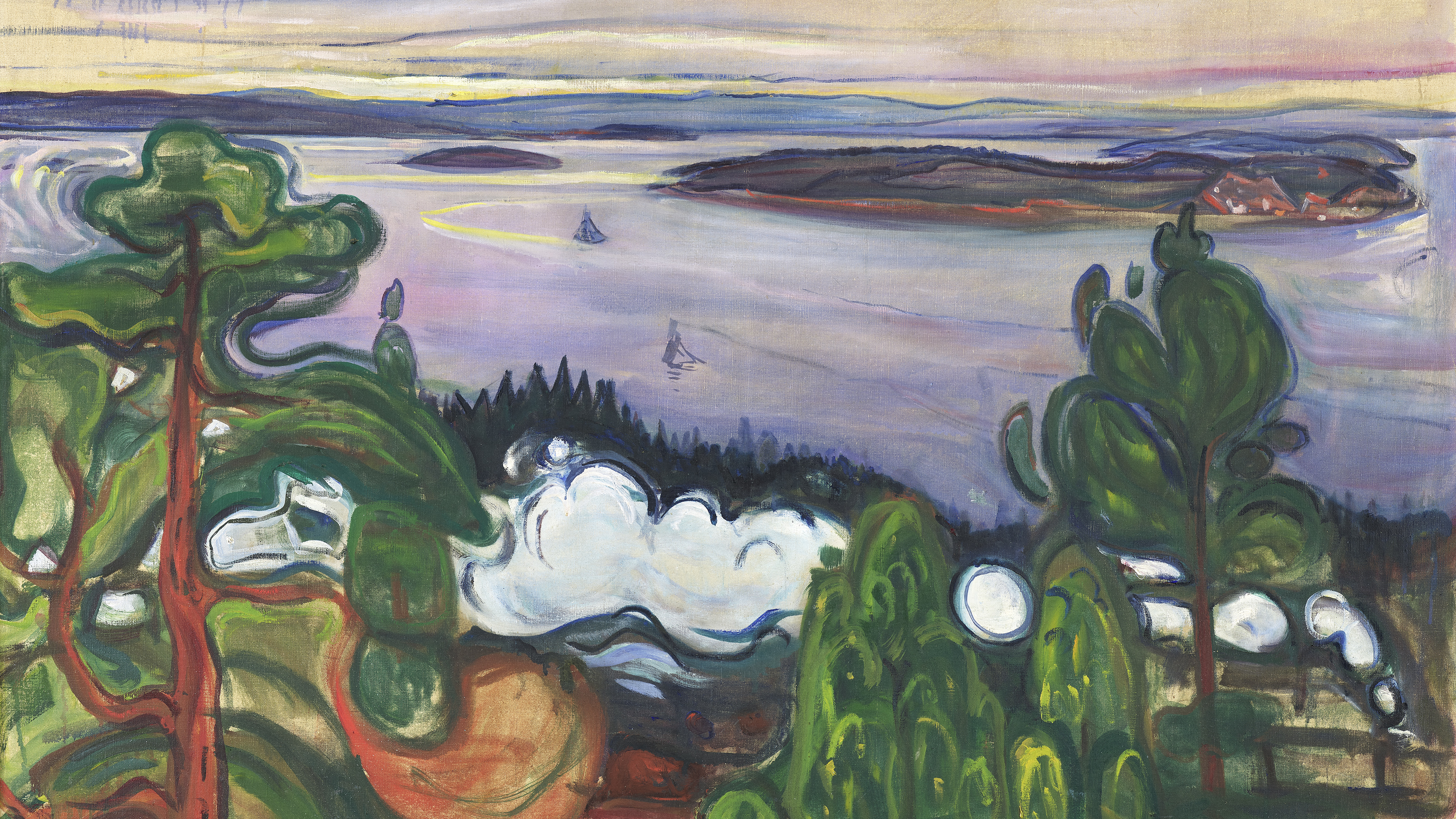 Switzerland’s best art exhibitions to see in 2025
Switzerland’s best art exhibitions to see in 2025Art fans, here’s your bucket list of the standout exhibitions to see in Switzerland in 2025, exploring compelling themes and diverse media
By Simon Mills
-
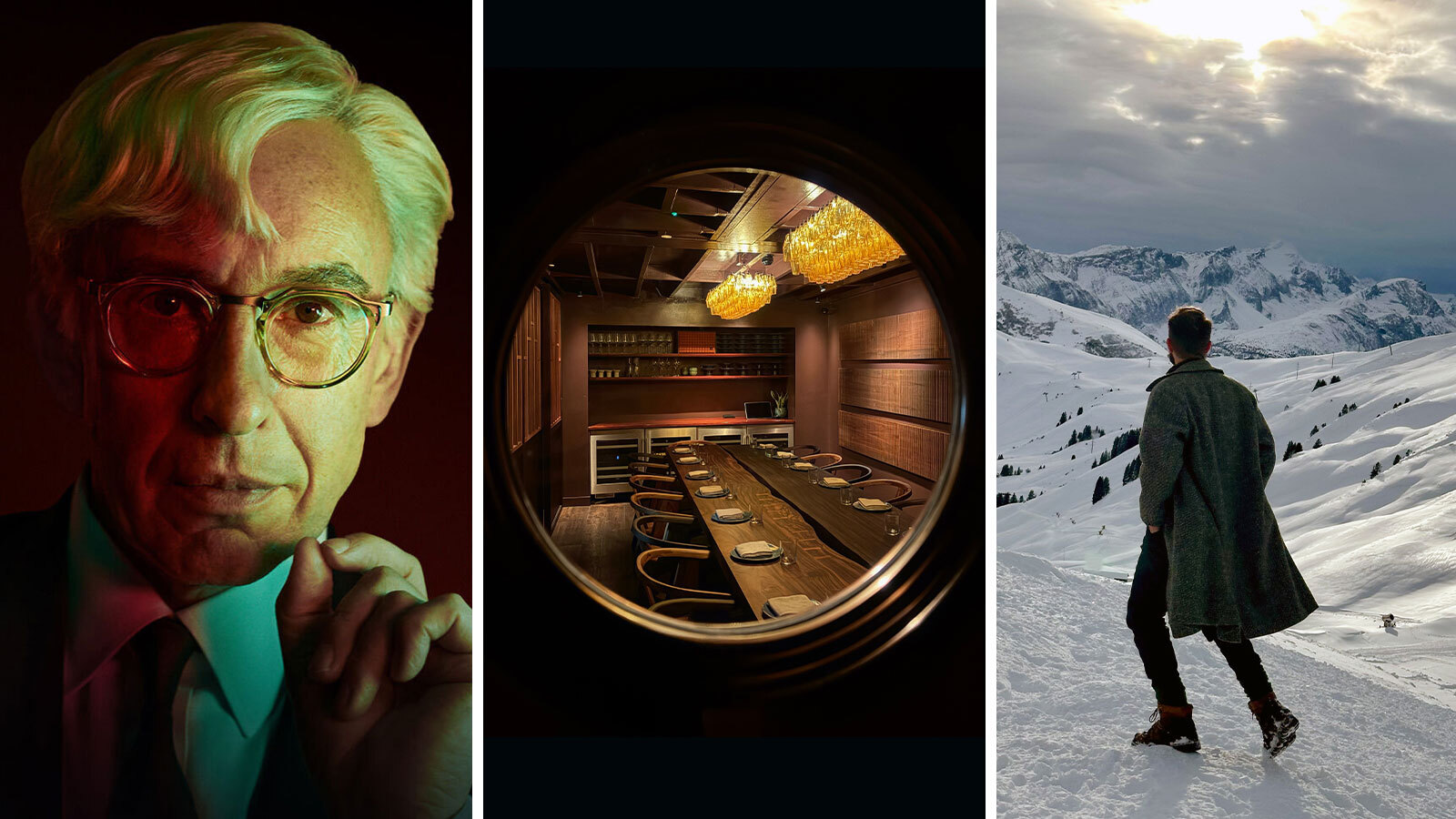 Out of office: what the Wallpaper* editors have been doing this week
Out of office: what the Wallpaper* editors have been doing this weekA snowy Swiss Alpine sleepover, a design book fest in Milan, and a night with Steve Coogan in London – our editors' out-of-hours adventures this week
By Bill Prince
-
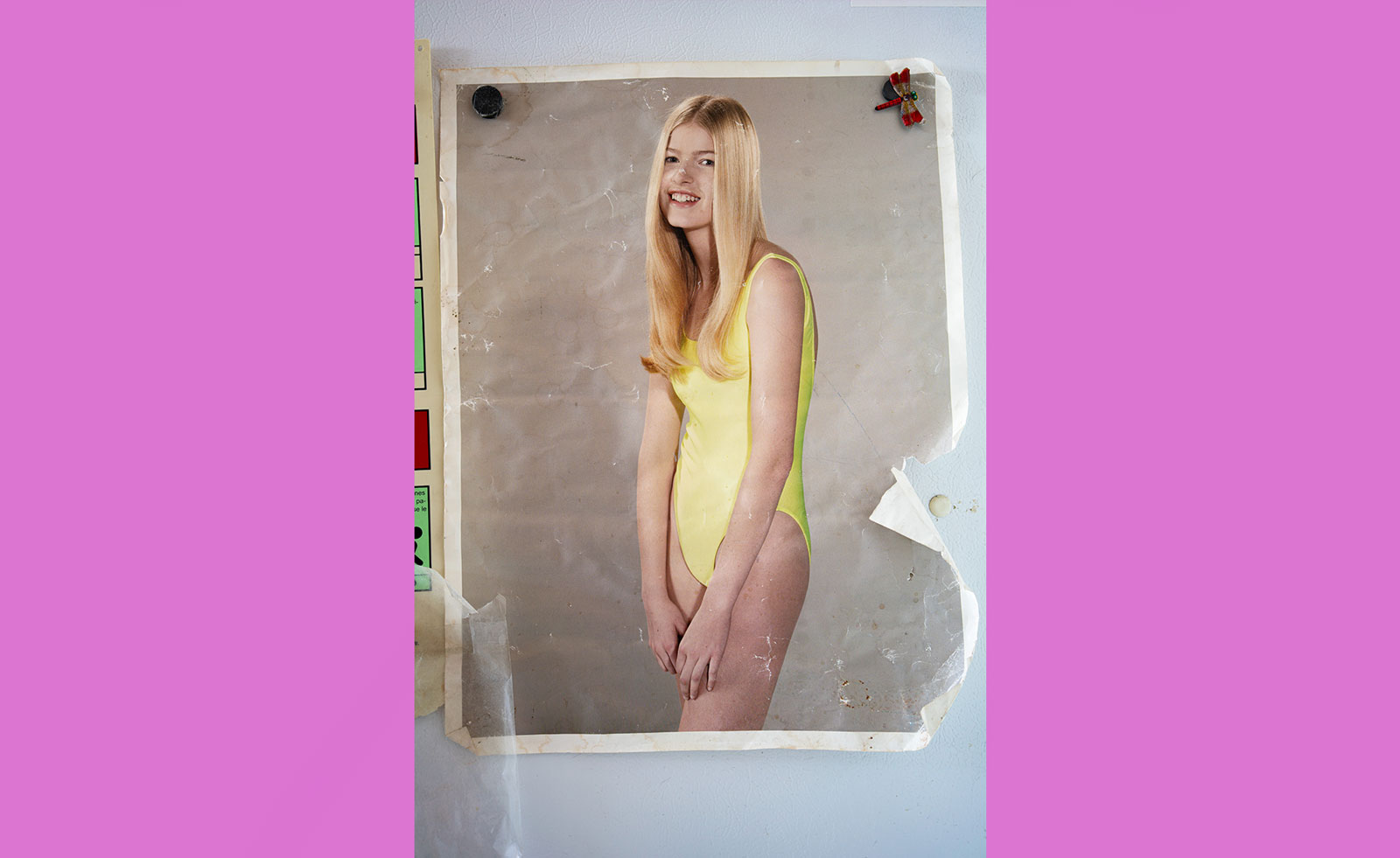 ‘Happy birthday Louise Parker II’: enter the world of Roe Ethridge
‘Happy birthday Louise Parker II’: enter the world of Roe EthridgeRoe Ethridge speaks of his concurrent Gagosian exhibitions, in Gstaad and London, touching on his fugue approach to photography, fridge doors, and his longstanding collaborator Louise Parker
By Zoe Whitfield
-
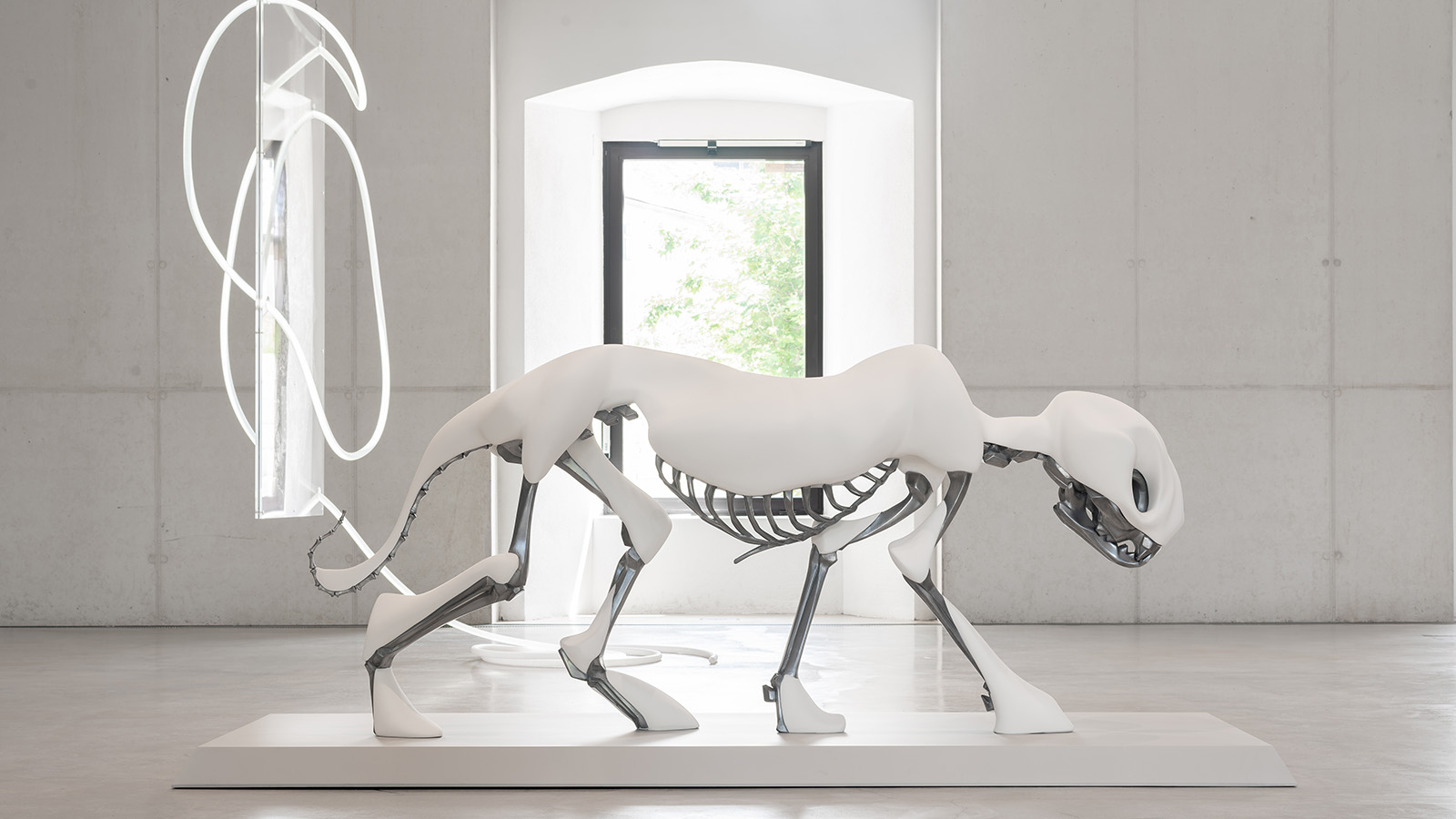 What to see at Art Basel 2024, as the fair arrives at its hometown
What to see at Art Basel 2024, as the fair arrives at its hometownArt Basel 2024, the fair of all fairs, runs 13-16 June, with 285 international exhibitors and a long list of side shows and projects
By Osman Can Yerebakan
-
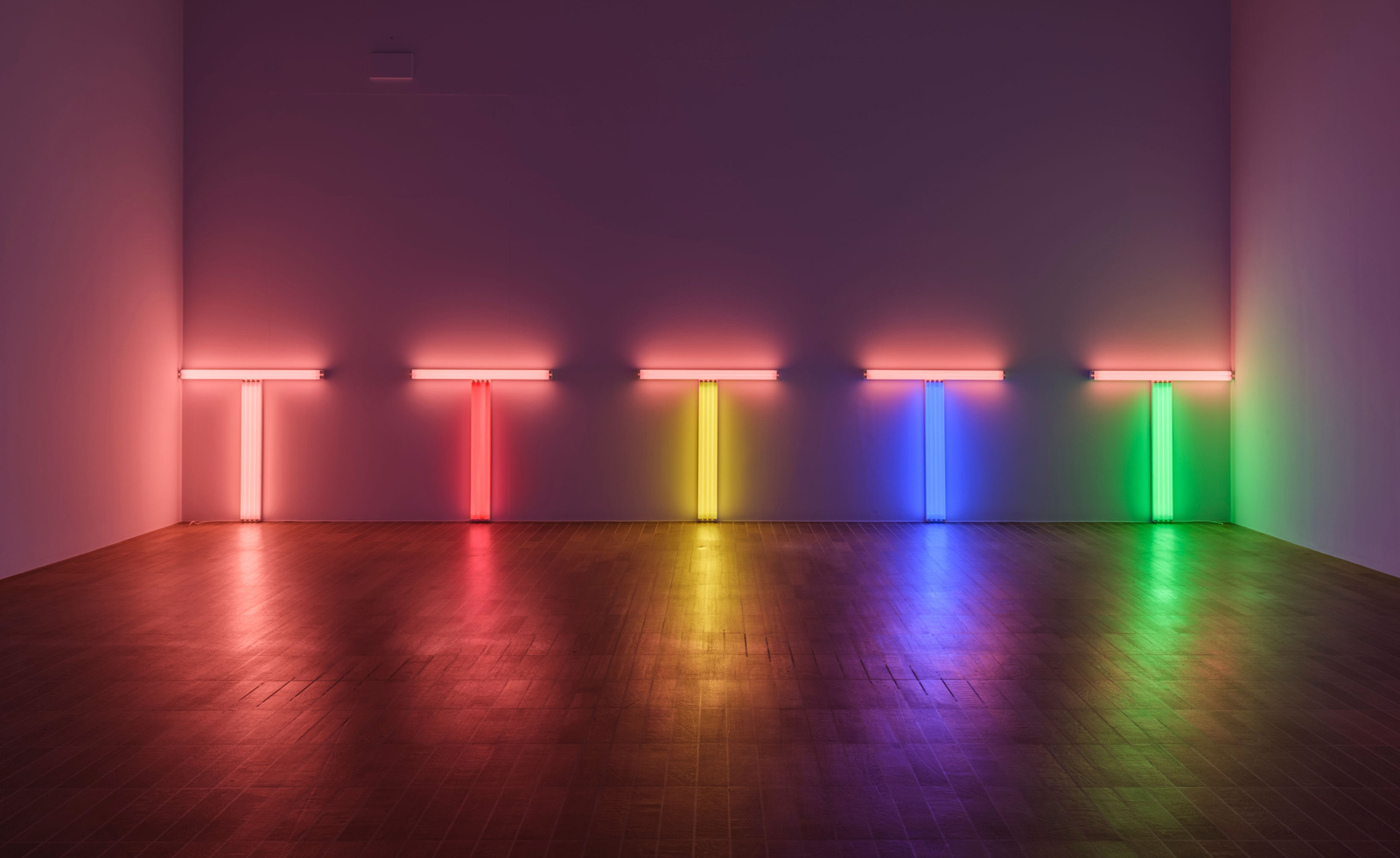 Dan Flavin’s fluorescent lights light up Basel
Dan Flavin’s fluorescent lights light up Basel‘Dedications in Lights’ celebrates Dan Flavin’s conceptual works, at Kunstmuseum Basel
By Amah-Rose Abrams
-
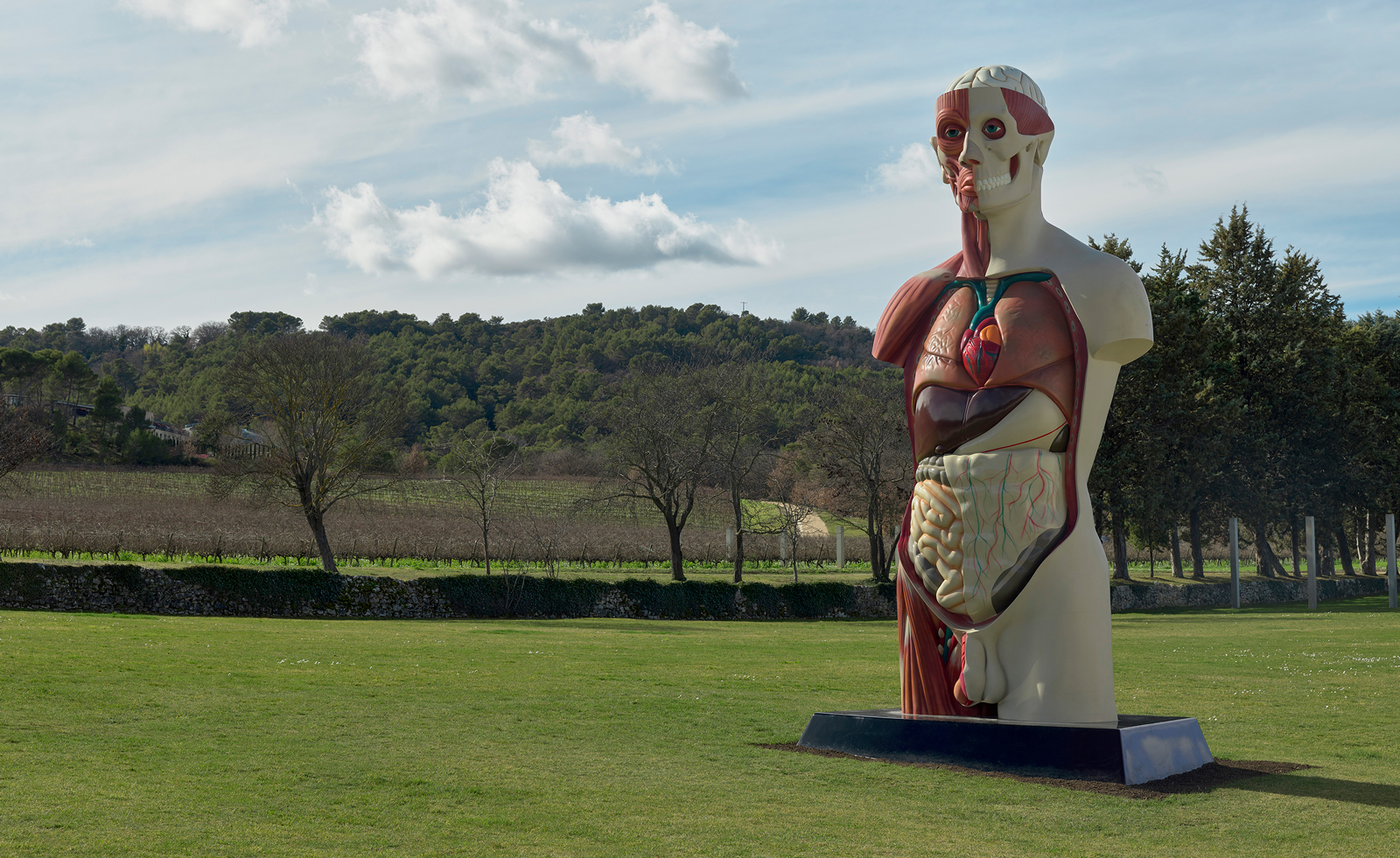 Damien Hirst takes over Château La Coste
Damien Hirst takes over Château La CosteDamien Hirst’s ‘The Light That Shines’ at Château La Coste includes new and existing work, and takes over the entire 500-acre estate in Provence
By Hannah Silver
-
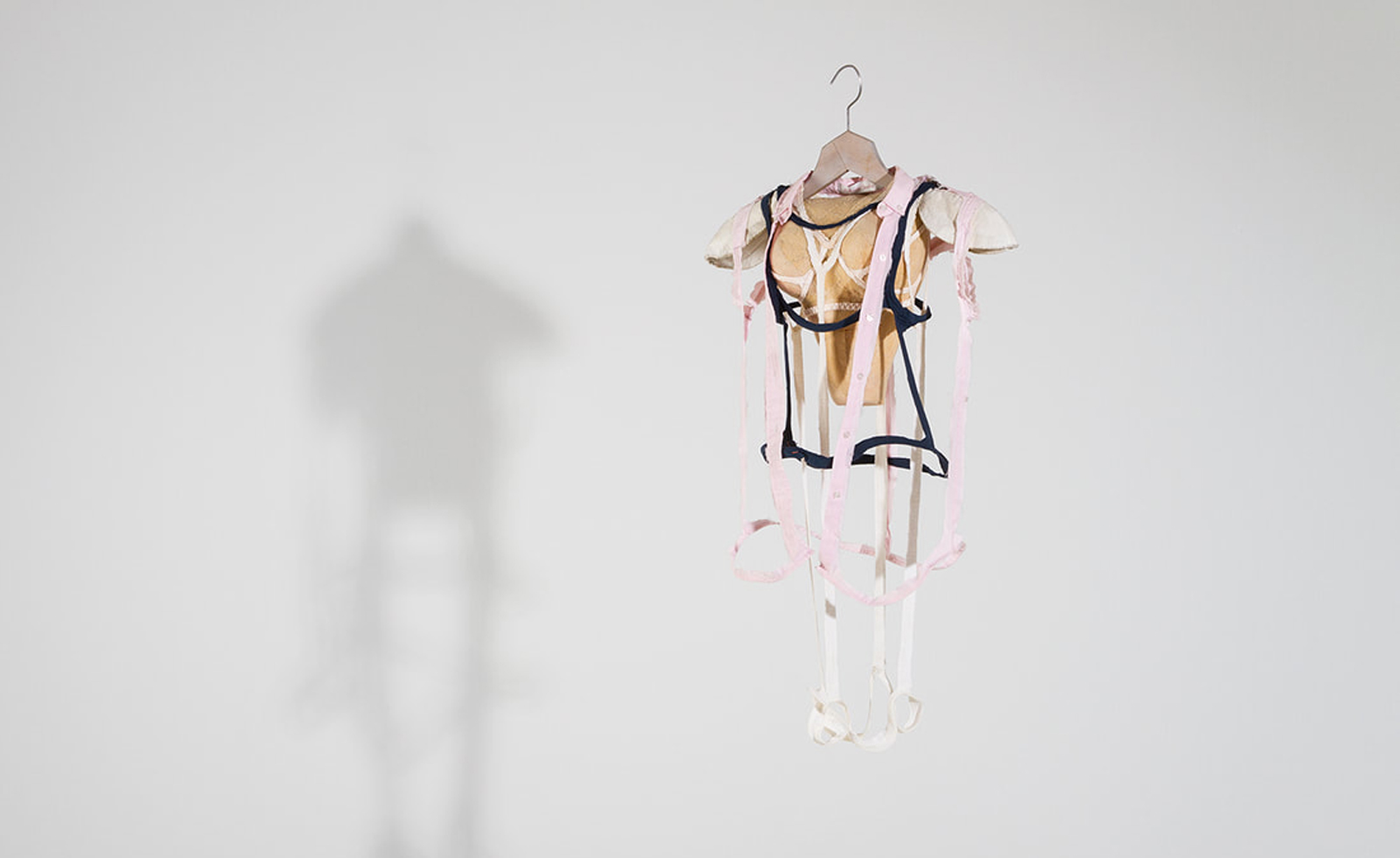 Space for My Body: Anu Põder’s retrospective opens in Switzerland
Space for My Body: Anu Põder’s retrospective opens in SwitzerlandEstonian artist Anu Põder is celebrated by Switzerland’s Muzeum Susch in an exhibition curated by Cecilia Alemani
By Hannah Silver
-
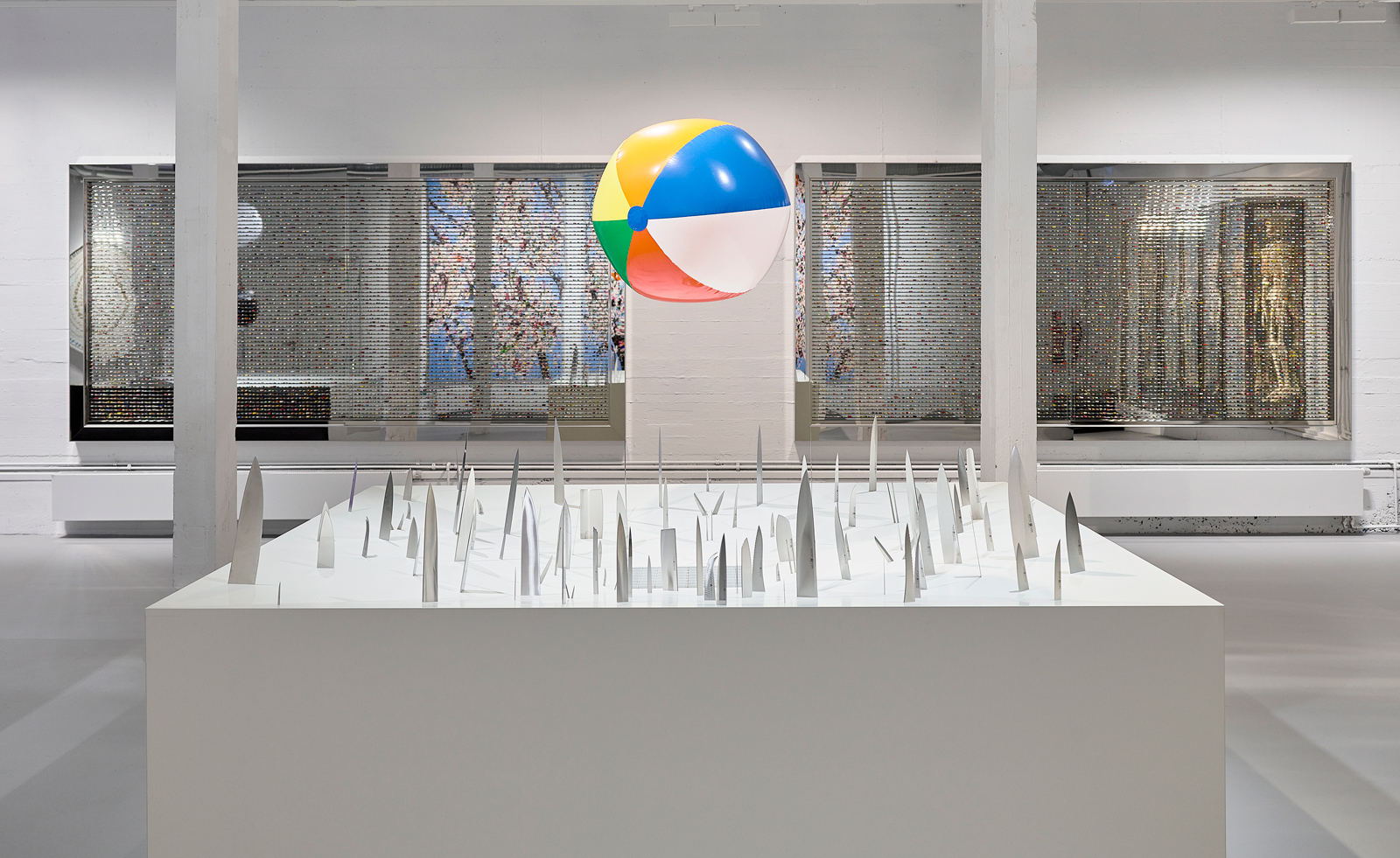 The Weight of Things: Damien Hirst curates his retrospective in Munich
The Weight of Things: Damien Hirst curates his retrospective in MunichThe Weight of Things, at The Museum of Urban and Contemporary Art, Munich (MUCA), was curated by Hirst himself and comprises work spanning four decades
By Amah-Rose Abrams